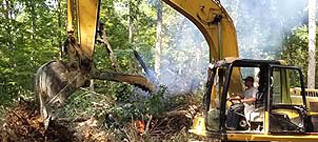Environmental Commentary by Michael J. Oesterling
When is the best time to eat a farm-raised or cultured Virginia oyster? The answer is anytime, even summer!
The outdated mantra we’ve heard of only eating oysters in months that have an “r” in them harkens to a time when refrigeration was not widely available, especially during extended transport.
This is certainly not the case today with refrigerated trucks and containers shipping raw oysters all over the country and world. Oysters harvested by today’s Virginia shellfish growers are brought to the dock quickly after harvest and no later than 10 a.m. during the hottest summer months.
The oyster farmer follows strict handling guidelines established by the Virginia Department of Health’s Division of Shellfish Sanitation, and oysters leave their hands safe to eat. The key to keeping these oysters safe to eat is to ensure that everyone down the distribution line keeps them cold.
Another reason that anytime is the right time to eat Virginia cultured oysters is the use of triploid technology in oyster aquaculture. This ensures that the Virginia cultured oyster that one consumes, even in the non-r summer months, will be plump, fat and tasty.
The use of triploid oysters has revolutionized oyster aquaculture, as it has other agricultural products — triploid watermelons, bananas, grapes and citrus, to name a few. That juicy seedless watermelon one loves is a triploid fruit, with three sets of chromosomes, just like a triploid oyster has three sets of chromosomes. While triploid technology was developed in a laboratory, triploid oysters for eating originated in a dedicated shellfish hatchery. At the hatchery, an oyster is “born,” coddled as a juvenile and then planted in the Chesapeake to mature, where they acquire the essence, or “merroir,” of the waters in which they are grown.
Oyster aquaculture is indeed undergoing a boom in Virginia and Maryland. This is a great thing for the Chesapeake Bay as well as other regions where it is happening. Virginia shellfish farmers are proud of their almost $100-million annual contribution to the economy of the commonwealth, but are equally proud of the environmental benefits accruing from their businesses. Shellfish farming is truly a ”green“ industry: no fertilizers, feeds, herbicides, drugs, chemicals or antibiotics are used. Oysters clean the water, remove nitrogen, accelerate denitrification, enhance water clarity, promote eelgrass survival and provide excellent habitat for myriad juvenile fish and crustaceans. Shellfish farmers’ crops are continually improving quality of the waters of the commonwealth. Culturing oysters also takes pressure off the wild populations, letting them do what they do best, provide habitat and filter water.
People are beginning to eat oysters again, and they want to do it in the summer. What better way to connect with a locale than eating a sustainably grown oyster that embodies the flavor of that place, while sitting at a favorite waterfront bar or restaurant?
Yes, there is some, albeit small, risk in eating raw oysters, just as with the consumption of any raw food, meat or produce. According to the Virginia Marine Resources Commission and the Virginia Department of Health‘s Division of Shellfish Sanitation, from July 2011 to June 2012, there were almost 6 million “servings” of Virginia oysters (wild and cultured). Virginia is well below the FDA threshold of one illness per 100,000 servings of oysters, which makes the chance of getting sick from eating raw shellfish very remote. Actually, illness from eating raw fruit or produce is far more frequent than illness from eating raw oysters.
It is the responsibility of everyone, from farmer to consumer, to ensure that raw oysters are safe to eat in the summer or anytime. Farmers are doing everything possible to reduce the risks to ensure that oysters leaving the farm are safe to eat. As a consumer, be an oyster consumption expert; know the risks, talk to your restaurant staff, ask where the oysters came from, when they were delivered — and make sure they have been kept cold. With a little diligence from everyone, we can safely keep oysters on the raw bar menu the whole year round.
Michael J. Oesterling is Executive Director of Shellfish Growers of Virginia. Distributed by Bay Journal News Service.


